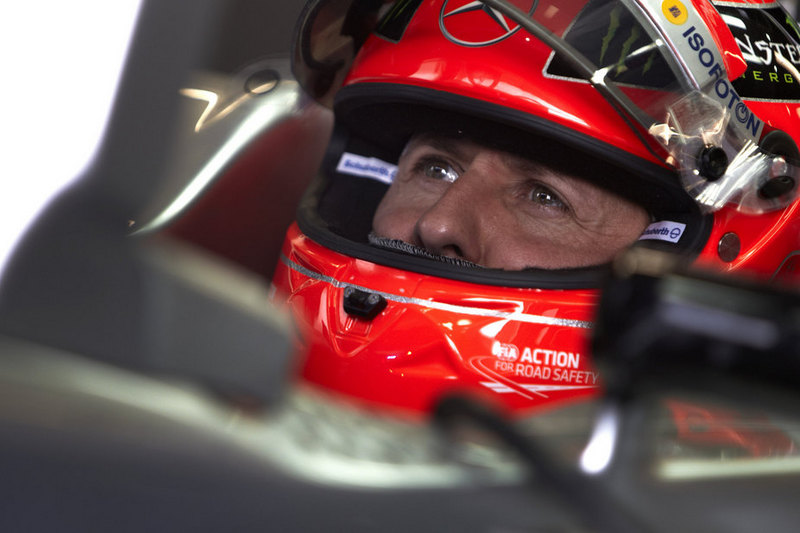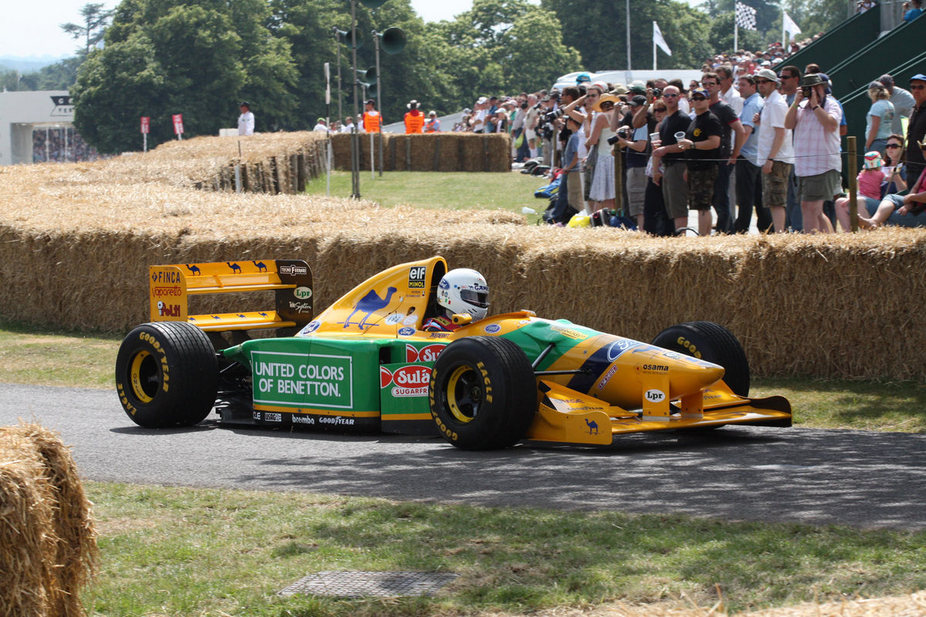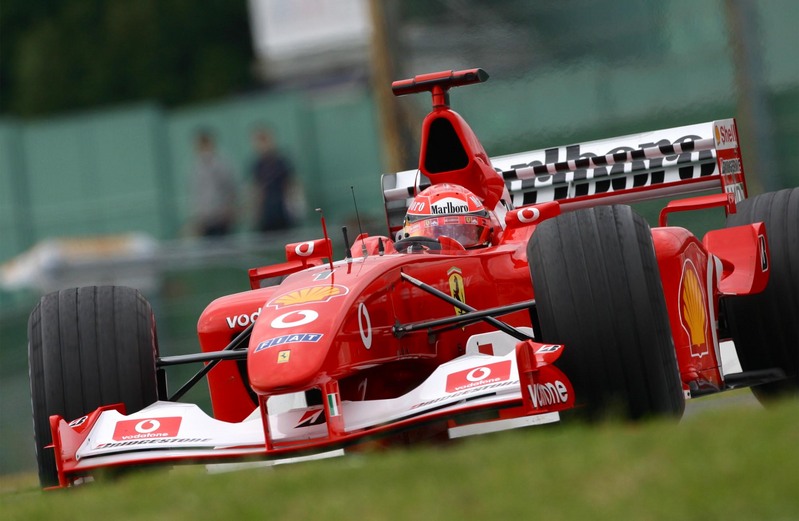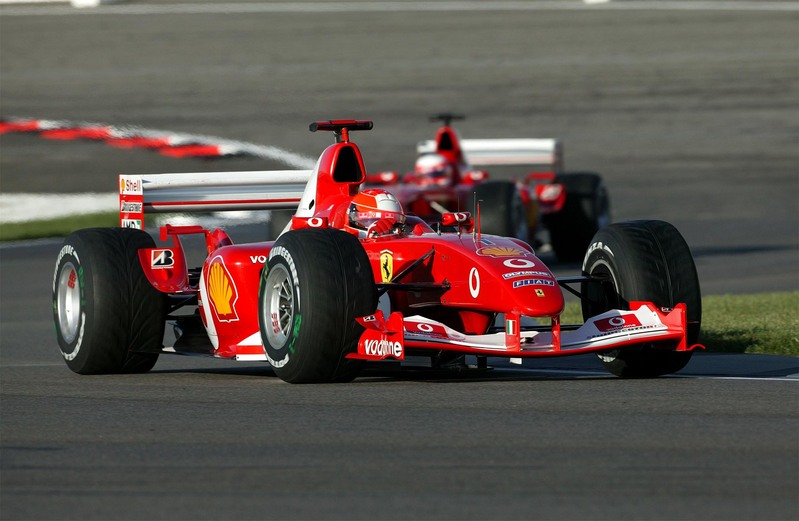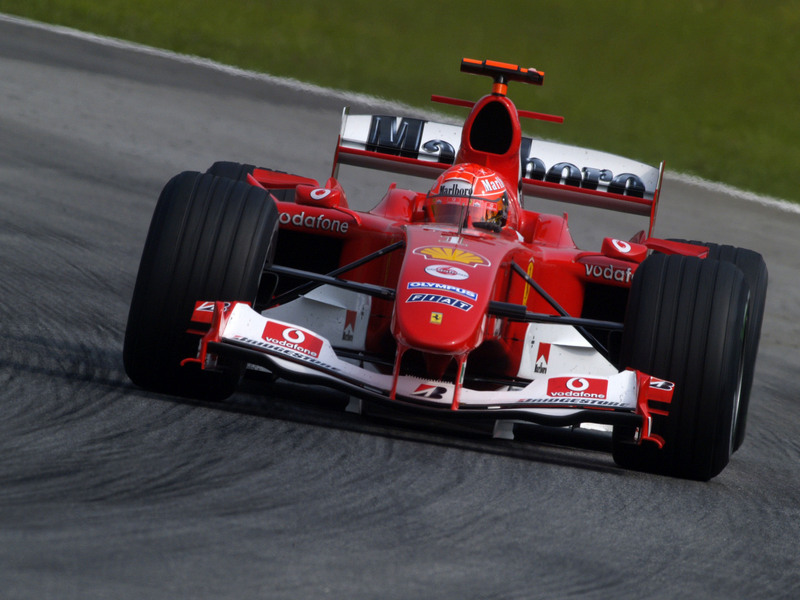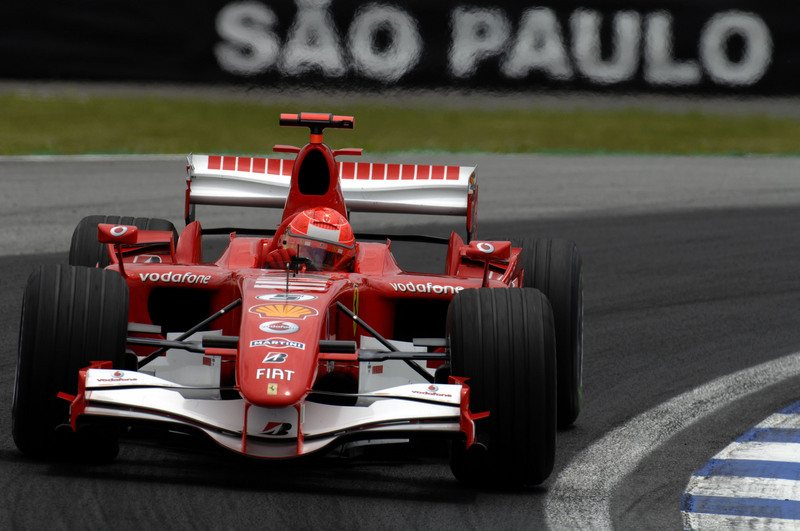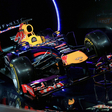|
Send this page to a friend! Fill in the form bellow | ||
news
Michael Schumacher running his 300th Grand Prix in Spa
Spa Francorchamps has also been named by Michael Schumacher as one of his favourite venues of the calendar in Formula One. Spa has been a kind of lucky charm for Schumacher. He drove his first ever Grand Prix there, he took there his first ever F1 win and now it will be this circuit that will see him celebrate the 300th Grand Prix of his career.
Since 1991, where the young German made his debut with Jordan GP his success was enormous counting seven World Championships five of them consecutive, 91 wins, 155 podiums, 68 pole positions and 77 fastest laps.
So to celebrate this occasion Autoviva has made a time travel and recovered all the twenty cars Michael Schumacher drove since he arrived to Formula One.
1. Michael Schumacher's 20 Formula 1 cars
Throughout the 19 seasons he competed in Formula One Michael Schumacher has raced for four different teams and had the chance to drive 20 different cars.
We remember those cars here.
2. Jordan GP 191 Cosworth
Michael Schumacher made his debut in F1 back in 1991 by the hands of Jordan, who was also running in the sports for the first time. He joined the team towards the end of the season and would only run the number 32 Jordan 191 at the Grand Prix of Belgium and would then race the remaining five races with Benetton. In Belgium Michael Schumacher retired.
3. Benetton B191
Michael drove the rest of the 1991 season in the B191 powered by the Ford HBA5 V8 engine in an exclusive deal with Ford and as a rookie he was able to score four points in the remaining five races of the season. His best finish was fifth in his second race, the Italian Grand Prix. Moving from Jordan to Benetton would prove later to be the best move for Schumacher.
4. Benetton B192 Cosworth
In his first complete season with Benetton, Schumacher drove the B192 a car designed by Ross Brawn and Rory Byrne once again powered by Ford's engines. He won his first ever Grand Prix in Spa Francorchamps' Belgian Grand Prix, after a clever pit strategy put him in the lead. He went on to finish the Driver's Championship in 3rd place ahead of drivers such as Ayrton Senna.
5. Benetton B193
In 1993 Benetton became consistently the third team of the grid, fighting for second place with McLaren and ocassionally with Williams. The B193 was once again designed by Brown and Byrne and powered by the latest Ford HBA series engine. That season Schumacher won the Portuguese Grand Prix and finished the championship in 4th place.
6. Benetton B194
The B194 was set-up to Schumacher's style of driving and was considered the strongest car in 1994's Formula One season. Schumacher won six of the first seven races of the season originating a large suspicion on wether it would use of rule forbidden technologies. At the end of the season Schumacher won his first World title with Benetton.
7. Benetton B195 Renault
The B195 was almost identical to the B194 but a change of engine supplier from Ford to Renault caused a redesign of the engine installation, gearbox and rear suspension. The team was now powered by a Renault V10 engine and the dominance of Michael Schumacher was huge with 9 victories in 17 races, winning his second world title in-a-row.
8. Ferrari F310
In 1996 Schumacher moved to Ferrari and had the opportunity to drive the V10 engined F310. The car proved to be a front-running car but never had enough pace nor reliability to compete with the dominating Williams FW18. In his debut in Ferrari Schumacher finished 3rd in the Drivers' standings.
9. Ferrari F310B
In 1997 Ferrari joined the "dream team" that would give it six consecutive world titles between 1999-2004 when it hired Brawn and Byrne. Together they developed the F310B, based on the F310, and although it was competitive it still failed to fight against Williams. Due to an incident with Villeneuve, Schumacher was disqualified from the championship that year
10. Ferrari F300
The F300 became the base of the for the dominance which Ferrari would achieve in the following seasons. Although it was aerodynamically inferior to Hakkinen's McLaren, the car was competitive and reliable and thanks to it Michael Schumacher managed to be runner-up in the Drivers' Championship along with Ferrari in the Constructors' standings
11. Ferrari F399
The F399 was almost identical to the previous season's F300 model, but with some technical improvements. For Schumacher it was one his poorest years in F1 as the accident where he broke a leg in Silverstone forced him to miss six races, returning for the last two races of the season. However Ferrari still clinched its first constructors' crown since 1983.
12. Ferrari F1-2000
The F1-2000 marks the start of the dominance of Ferrari in the first half of the first decade of the new millenium. The car was a direct development of the F300 and F399 from the previous two seasons, using the same basic gearbox and a new engine with a wider V-angle (90º). Thanks to it Schumacher won his 3rd World Title, the first in 21 years for the Italian Scuderia.
13. Ferrari F2001
For 2001 Ferrari designed its F2001 around new regulation changes which mandated a higher mounted front wing assembly to reduce downforce. The car was very successful and took 10 wins, 13 pole positions, 3 fastest laps and 197 points in its career. Thanks to it Schumacher conquered his fourth career title, scoring a then record 123 points.
14. Ferrari F2002
The Ferrari F2002 was one of the most successful Formula One car designs of all time with a total of fifteen Grands Prix wins, from nineteen races in 2002 and 2003. It was much lighter than its predecessor and powered by a 3.0 litre V10 engine. Schumacher completely dominated the season taking 11 wins out of 17 races and conquering his third consecutive title with Ferrari, the fifth of his career.
15. Ferrari F2003-GA
Designated "GA" as a mark of respect to Gianni Agnelli, the recently deceased head of Fiat, the F2003-GA was based on the previous Ferrari F2002. Although it was fast and competitive it had a tendency to overuse its tyres, causing a close battle for the title between Schumacher and Hakkinen. The German eventually took home his 6th World title, the fourth consecutive with Ferrari.
16. Ferrari F2004
Schumacher won his last title in 2004 driving the F2004 the fifth consecutive one with Ferrari. Heavily based on the previous season's F2003-GA, the F2004 continued the run of success the team had enjoyed since 1999. The car was as successful as the equally dominant F2002, winning 15 out of 18 races, and scoring 12 pole positions.
17. Ferrari F2005
After huge success Ferrari fell short in the 2005 season with the F2005, with the team scoring their lowest result in the constructors since 1995. The general consensus was that the lack of form was caused by the Bridgestone tyres. That season Schumacher only scored one victory in Indianapolis in a race where only Ferrari, Jordan and Minardi competed.
18. Ferrari 248 F1
Named after its V8 engine - 24 is the capacity in decilitres, and 8 the number of cylinders, the 248 F1 broke the F200x system used from 2001 to 2005, and returned to the system similar to that used in the 1950s and 1960s. Schumacher competed for yet another title against Fernando Alonso, but in the end he only managed 2nd place in the standings and announced his retirement from the sport.
19. Mercedes-Benz W01
In 2010 Mercedes GP brought back Schumacher to F1. Doubts is ability to compete at full-level rose but it was the lack of competitiveness of the W01 that proved to be his major enemy. It was based the Brawn BGP 001 that dominated the 2009 season but it was far from being as competitive. For the first time since 1991 Schumacher did not score a win, podium, pole position or fastest lap
20. Mercedes-Benz W02
2011 would be yet another difficult year for Mercedes GP with the W02. The car is an evolution of the W01 and still lacked the pace of front-runners such as Red Bull and McLaren. The best result of the team came in the Canadian Grand Prix where Schumacher finished 4th. At the endo of the season the German was eigth behind his team-mate Nico Rosberg.
21. Mercedes-Benz W03
In this season Mercedes GP managed to give its W03 some more competitiveness, but it is now lacking some reliability. Although Rosberg conquered the team's first victory since it bought Brawn GP, Schumacher has failed to finish in 6 out of 11 races, putting him 12th position at the moment. This season the German also returned to podium finishes in Valencia, Spain.
Contribute
latest news




